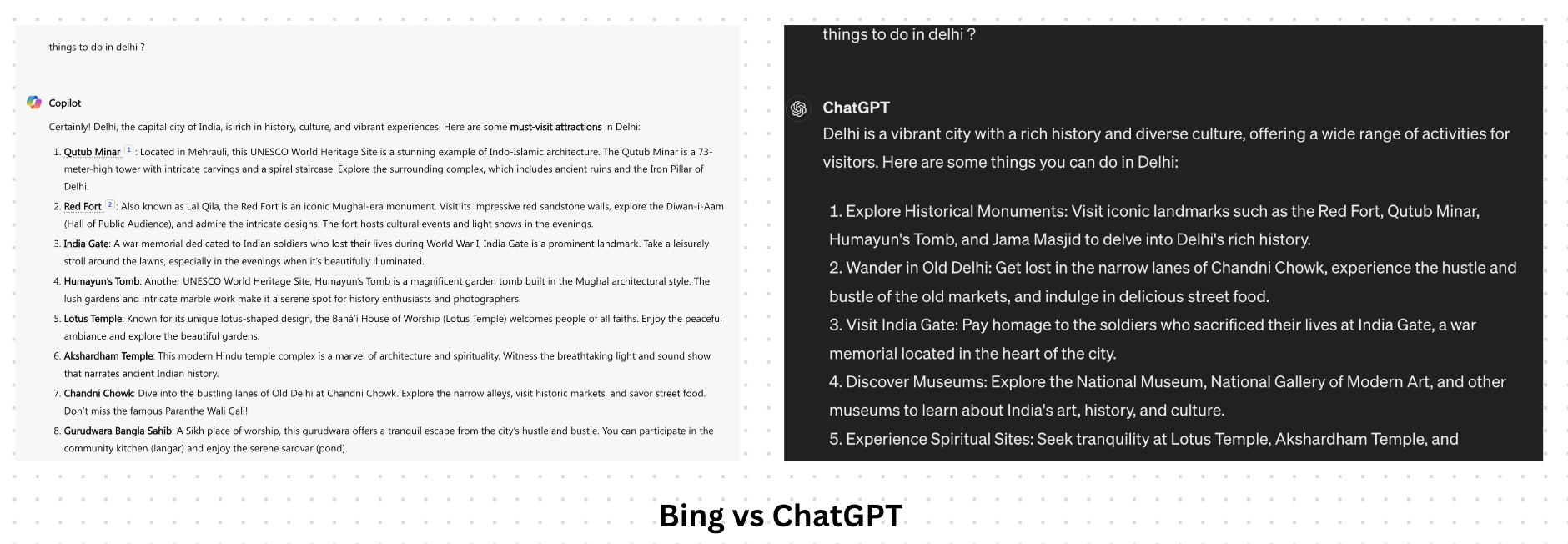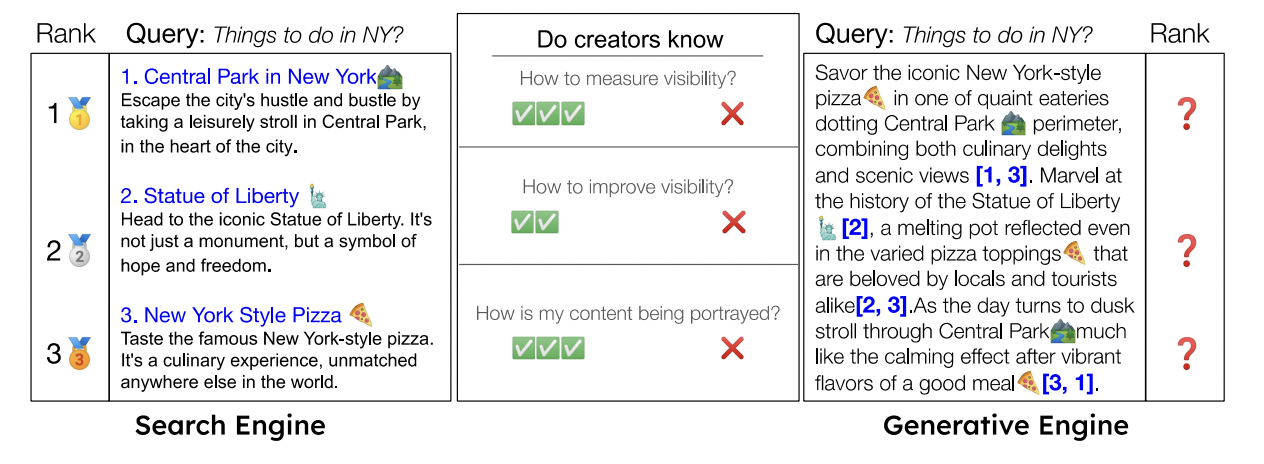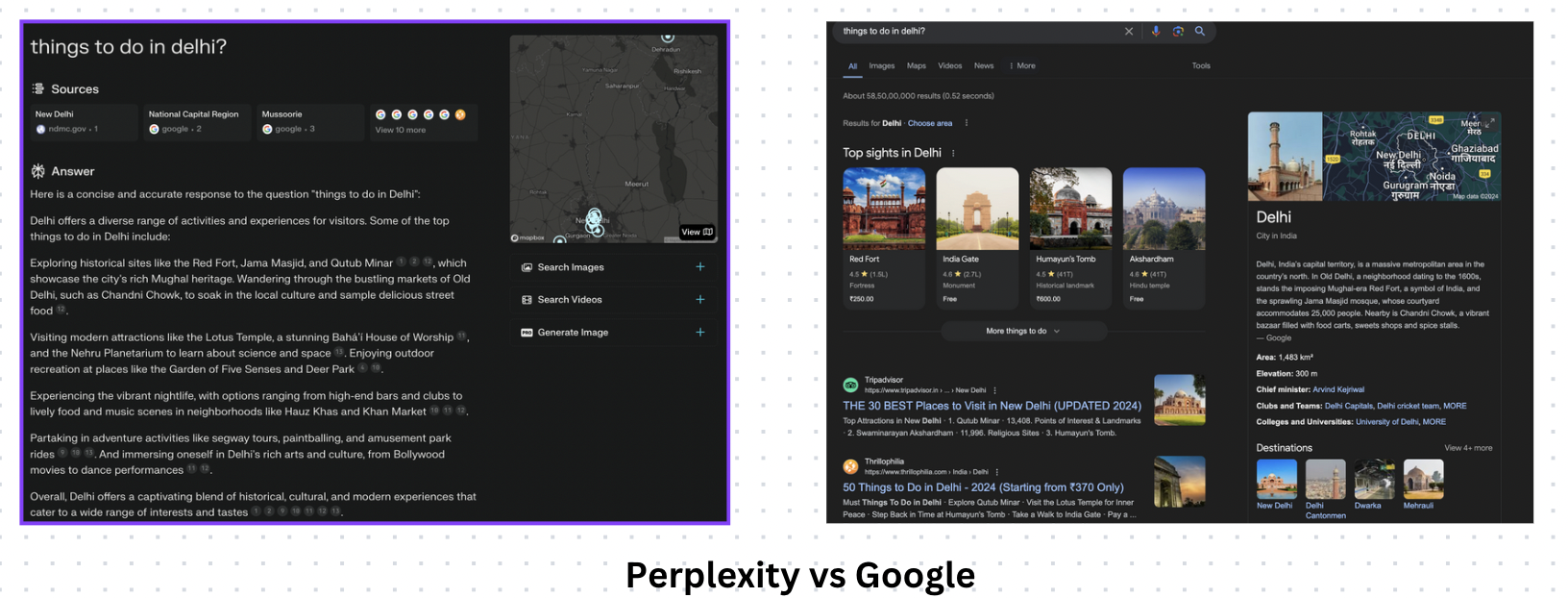Generative Search Engine Optimization (GEO) vs. Search Engine Optimization (SEO): What it's all about?
We at RankSite went through a recent study on GEO done by researchers from IIT Delhi, Princeton, Georgia Tech. The new concept of Generative Engine Optimization (GEO) is a paradigm shift in the field of search engine optimization. The research paper talks in details about the approaches taken to optimise websites for the Generative Engine Optimization (GEO) search results. The paper also outlines what steps that are needed to be taken to prepare for this shift.
As old-school and existing SEO techniques are becoming less effective in the ever-evolving digital landscape, businesses are looking for new ways to improve their website rankings and visibility in search results, and the same strategies might not work and might become absolute in the future.
Innovation is the key to success
Everyone know about the companies that succumbed to bankruptcy because they failed to innovate, from cases of Kodak losing to Canon, Nokia losing to Samsung & Apple, Blockbuster losing to Netflix, Floppy disks losing to USB drives, and the list goes on. The same case might come to the search engine optimization industry because as of today everybody wants to rank on the first page of Google, but in coming time it will be about ranking on the first page of the Generative Engine Optimization (GEO) search results. So the paradigm shift would be searching on a generative search engine rather than a traditional search engine, but that shit will be slow but one should always be ready open to innovation as technology is changing rapidly.
What is a generative engine or ai assisted search?
Aritificial Engine forms the basis for state of the art search engine technology.
Current advanced LLM's based systems present such as Perplexity, BingChat, Pi or everyone's partner ChatGPT, these provide add on of state of the art models in assisting search. These new type of search engines are called as generative engines (GE), they provide information on the basis of multiple sources.
But there is also a challenge that these GE pose, they are capable of providing detailed results for a query and provide with a gist to go with unlike traditional search engines.
Below you can see a response for a query things to do in delhi? executed on traditional search engines as well as generative engines.

The study: “GEO: Generative Engine Optimization”
In the study simply named “GEO: Generative Engine Optimization”, the researchers conducted experiments to evaluate the effectiveness of different Generative Engine Optimization (GEO) methods.
They used a benchmark called GEO-BENCH, which consisted of 10,000 diverse queries from different sources and domains.
Dataset Description
- MS Macro: Contains real anonymized user queries from Bing and Google Search Engines.
- ORCAS-1: Contains real anonymized user queries from Bing and Google Search Engines.
- Natural Questions: Contains real anonymized user queries from Bing and Google Search Engines.
- AllSouls: Contains essay questions from "All Souls College, Oxford University". Requires Generative Engines to perform appropriate reasoning to aggregate information from multiple sources.
- LIMA: Contains challenging questions requiring Generative Engines to not only aggregate information but also perform suitable reasoning to answer the question (e.g., writing a short poem, python code.).
- Davinci-Debtate: Contains debate questions generated for testing Generative Engines.
- Perplexity.ai Discover: Queries are sourced from Perplexity.ai’s Discover section, which is an updated list of trending queries on the platform.
- ELI-5: Contains questions from the ELI5 subreddit, where users ask complex questions and expect answers in simple, layman’s terms.
- GPT-4 Generated Queries: To supplement diversity in query distribution, GPT-4 is prompted to generate queries ranging from various domains (e.g., science, history) and based on query intent (e.g., navigational, transactional) and based on difficulty and scope of generated response (e.g., open-ended, fact-based).
For each query in the benchmark, the researchers randomly selected a source website and applied one of the GEO methods separately to optimize the content of that source. They generated multiple answers per query to ensure statistical reliability.
The performance of the GEO methods was evaluated using two metrics: Position-Adjusted Word Count and Subjective Impression.
The Position-Adjusted Word Count metric considered the word count and position of the citation in the generative engine's response.
The Subjective Impression metric incorporated multiple subjective factors to compute an overall impression score.
The relative improvement in impression for each source was calculated by comparing the impression scores of the optimized response to the baseline response without any optimization.
Additionally, the researchers analyzed the performance of the GEO methods across different categories and domains.
They identified the top-performing categories for each method, indicating the specific contexts in which each method was most effective.
The study used the Perplexity.ai search engine and an AI search engine modeled on Bing Chat. The researchers found that the results were similar across both platforms.

The evaluation metrics from the study
They evaluated the GEO methods on a subset of 200 samples from the test set to assess their performance in a real-world generative engine scenario.
The nine different optimization techniques evaluated
The researchers evaluated nine different GEO methods to optimize website content for generative engines.
To me it seems like these methods is a mix of classic SEO techniques (think keyword-usage, E-E-A-T, semantic richness, external links etc)
These 9 methods were:
- Authoritative: Modifies the text style of the source content to be more persuasive and authoritative, making claims with confidence.
- Keyword Stuffing: Modifies content to include more keywords from the user query, similar to traditional SEO optimization strategies.
- Statistics Addition: Modifies content to include quantitative statistics instead of qualitative discussion wherever possible, adding data-driven evidence.
- Cite Sources: Adds relevant citations from credible sources to support claims and provide attribution throughout the website content.
- Quotation Addition: Incorporates quotations from relevant sources to enhance the authenticity and depth of the website content.
- Easy-to-Understand: Simplifies the language and structure of the website content, making it more accessible and appealing to the generative engine and users.
- Fluency Optimization: Improves the fluency and readability of the website text, ensuring a smooth and coherent reading experience.
- Unique Words: Adds unique and intriguing vocabulary to the website content, making it stand out and increasing its appeal.
- Technical Terms: Incorporates technical terms and jargon relevant to the domain or industry, demonstrating expertise and catering to specific audiences.
Example of how the researches implemented GEO
The most effective GEO methods They found that some methods were more effective in certain domains, while three strategies proved successful across all types of sites.
These top three strategies were Cite Sources, Quotation Addition, and Statistics Addition. These methods, requiring minimal changes to the actual content, improved the website's visibility by 30-40% compared to the baselines. Interestingly, the researchers found that the effectiveness of optimization strategies varied depending on the knowledge domain.
For instance, the "Authoritative" optimization, which uses more persuasive language, worked best for content related to the Historical domain.
Meanwhile, the Citation optimization was most effective for factual search queries, and adding statistics proved beneficial for Law and government-related questions.
Data table with the study findings
The research also revealed that some strategies were less effective than anticipated.
Using persuasive and authoritative tones in the content did not generally improve rankings in AI search engines.
Similarly, adding more keywords from the search query into the content (what we in classic SEO know as keyword stuffing if overdone), was not effective and performed worse than the baseline by 10%.
Insights from the study
The researchers state that websites that are traditionally lower-ranked in SERP could significantly improve their visibility using GEO methods.
For instance, that the Cite Sources method led to a substantial 115.1% increase in visibility for websites ranked fifth in SERP.
This to me seems a bit random or too massive a change, which leads me to suspect that their methods are not 100% bulletproof.
Also they label “lower-ranked websites” as someone in fifth place in the SERPs. And that “many of these lower-ranked websites are often created by small content creators or independent businesses”.
To me, this misrepresents a misunderstanding when it comes to SEO. Lower-ranked websites are out of the top 10 for most queries, as today it requires a lot just to get to the first page. And most often first pages do not have small content creators in the first page.
While the study suggests that Generative Engine Optimization (GEO) could level the playing field for small content creators and independent businesses, there's a contrasting viewpoint that AI search or generative engines might instead favor larger, more credible websites.
This could potentially widen the gap between these entities and smaller businesses in the digital space.
Conclusion
The study provides valuable insights into the emerging field of Generative Engine Optimization (GEO) and its potential impact on website visibility in AI search engines. The shift towards AI-driven search engines and generative engines presents new challenges and opportunities for content creators and businesses, and it is going to be worth keeping an eye on how this term evolves in the future.
